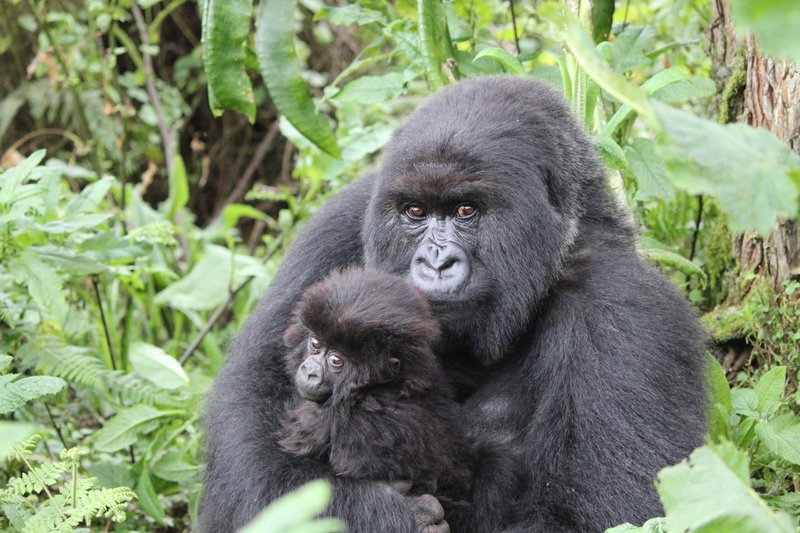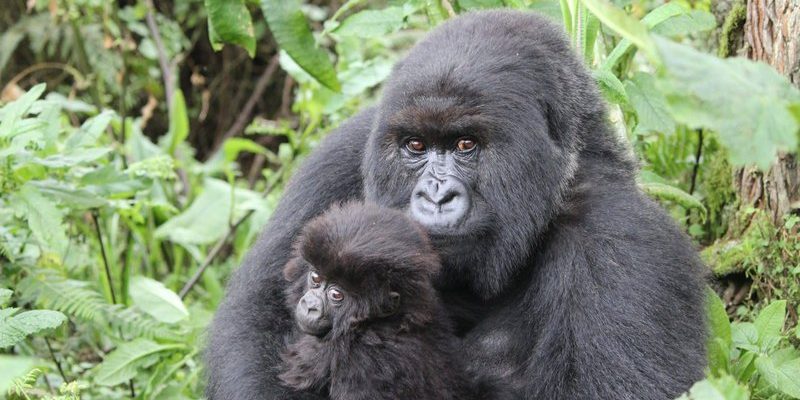
Now, understanding why the Eastern gorilla is endangered isn’t just about knowing the facts. It’s about grasping the full picture—the challenges they face in their natural habitat and what’s being done worldwide to protect them. Let’s dive into this fascinating yet concerning topic, exploring the various factors affecting these incredible creatures and how global efforts aim to turn the tide.
Why Are Eastern Gorillas Endangered?
The Eastern gorilla faces a variety of threats that have led to its endangered status. Habitat loss is perhaps the biggest culprit. Imagine living in a place where your home is chopped down for farms or cities. Deforestation, often driven by agriculture or logging, leaves gorillas with no place to live. As their habitats shrink, they not only lose shelter but also their food sources.
Another significant threat is poaching. This isn’t a hunt for sport; it’s a desperate act driven by demand for bushmeat or illegal pet trade. People might not think about how this impacts the ecosystem. When a species like the Eastern gorilla is removed, the balance in their habitat shifts, leading to further ecological issues.
Moreover, the spread of diseases from humans to gorillas is a rising concern. Gorillas are susceptible to illnesses that we might find harmless. So, when humans come into close contact with them, there’s a risk of transmitting diseases like respiratory infections, which can be deadly for these majestic animals.
Current Population Status
As of now, the Eastern gorilla population is estimated to be alarmingly low. The International Gorilla Conservation Programme reports that there are about 5,000 mountain gorillas and fewer than 2,500 eastern lowland gorillas left in the wild. This number is sobering when you think about how many we once had.
The mountain gorillas, despite facing harsh conditions, have seen a slight increase thanks to conservation efforts. However, the eastern lowland gorilla is in a much worse situation. It’s like trying to keep a candle lit in a strong wind—conservationists are working tirelessly, but the threats persist.
But don’t lose hope! Conservation programs have been increasingly successful in raising awareness and promoting sustainable practices. Communities are beginning to understand the importance of preserving these creatures, both for ecological balance and for their own well-being.
Conservation Efforts in Action
Several organizations are stepping up to tackle the issues threatening the Eastern gorilla. The Gorilla Doctors, for instance, work hard to provide veterinary care to sick and injured gorillas. Their efforts help reduce the mortality rate among these animals. It’s like having a dedicated team of doctors who go into the wild to ensure gorillas get the help they need.
Additionally, groups like the World Wildlife Fund (WWF) and Fauna & Flora International (FFI) focus on habitat protection and anti-poaching initiatives. They’re not just protecting the gorillas; they’re also working to secure the forests where they live, ensuring a healthy ecosystem.
Community involvement is crucial, too. Through outreach programs, locals are educated on the importance of conservation and how to live sustainably. This collaboration is like building a bridge between humans and wildlife. When people see gorillas as part of their community and economy, they’re more likely to protect them.
The Role of Eco-Tourism
Eco-tourism has emerged as a valuable tool in conservation efforts for the Eastern gorilla. When people travel to see these magnificent creatures in their natural habitat, it brings in much-needed revenue for local economies. This financial support can then be funneled back into conservation projects, creating a win-win situation.
Consider the Virunga National Park in the Democratic Republic of the Congo. Tourists flock to the park for gorilla trekking experiences, leading to increased funding for protection and habitat restoration efforts. It’s like sending a thank you note to the gorillas for being so incredible—people are willing to pay to see them thrive.
However, this type of tourism must be managed carefully. If not done sustainably, it can add stress to the gorillas and their environment. Responsible tourism can help, ensuring that visitors follow guidelines that prioritize the wellbeing of these animals.
Challenges and Future Directions
Despite concerted efforts, challenges remain. Political instability in certain regions can hamper conservation initiatives. Imagine trying to nurture a garden with stormy weather constantly in the forecast—it makes growth difficult.
Another hurdle is funding. While many organizations are dedicated, they often rely on donations and grants, which can fluctuate. Like trying to fill a bucket with a hole in the bottom, it can feel like progress is hard to maintain.
Looking ahead, innovative strategies are needed. This might include using technology for monitoring gorilla populations and habitats, or developing community-based programs that reward locals for protecting wildlife. With the right approach, we can turn the tide for the Eastern gorilla.
How Can You Help?
You might be wondering how you can make a difference, even if you’re far from the forests of Africa. There are several ways you can help.
- Support organizations: Consider donating to reputable wildlife conservation groups.
- Spread awareness: Share information about the Eastern gorilla on social media or with friends to raise awareness.
- Choose sustainable products: Opt for products that do not contribute to deforestation or habitat loss.
- Be an eco-tourist: If you travel, choose eco-friendly tours that support conservation efforts.
Every small action adds up, like drops in a bucket, gradually filling it to the brim.
Wrapping It Up
The Eastern gorilla’s plight is a reminder of the delicate balance in nature and the role we play in maintaining it. These gentle giants hold a special place in our ecosystem and, in many ways, our hearts. By understanding the challenges they face and supporting conservation efforts, we can help ensure that future generations get to experience the wonder of these remarkable creatures.
Let’s take action together for the Eastern gorilla. After all, protecting these animals is not just about saving a species; it’s about preserving the rich tapestry of life on our planet. Who knows? The next time you think of gorillas, you might feel a little less worried and a little more hopeful.

